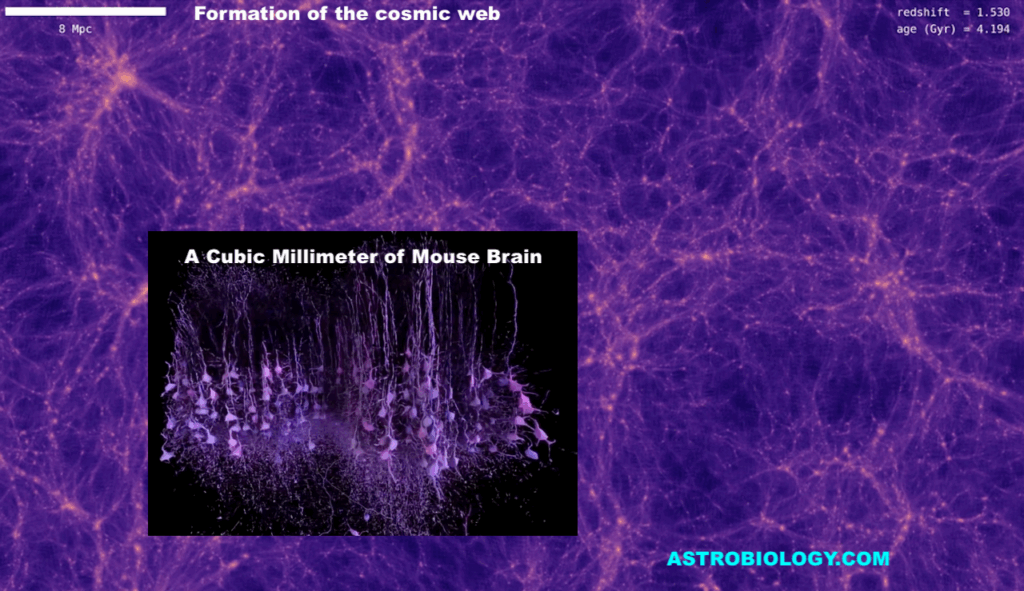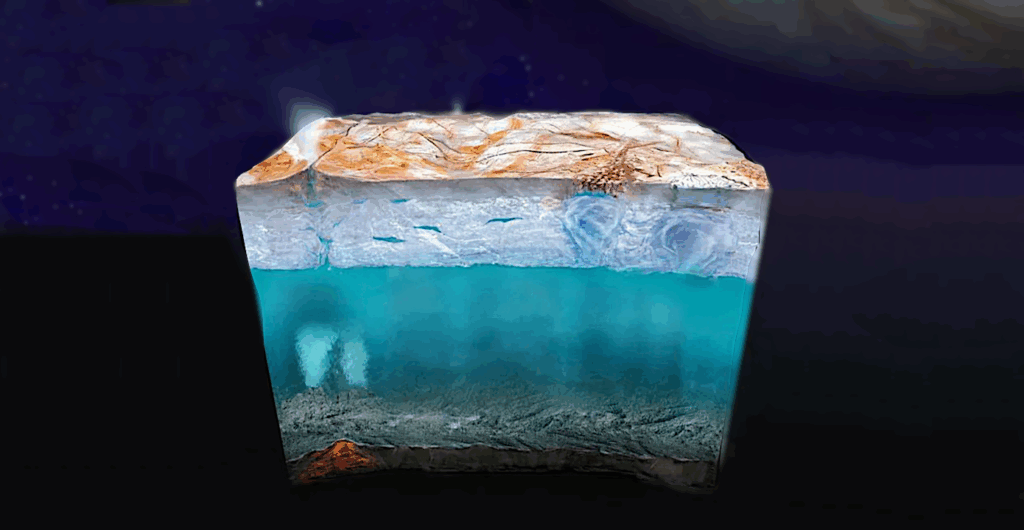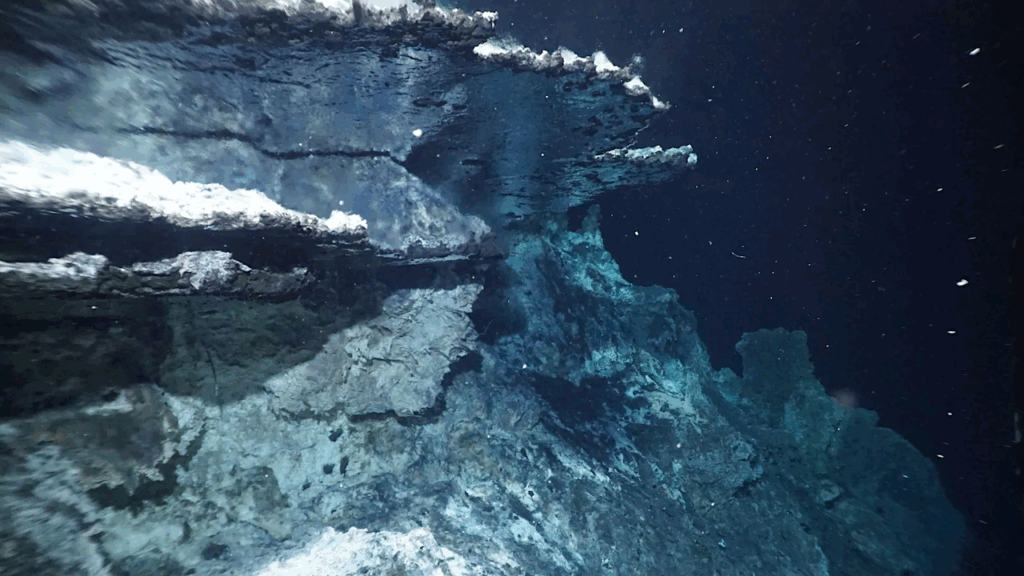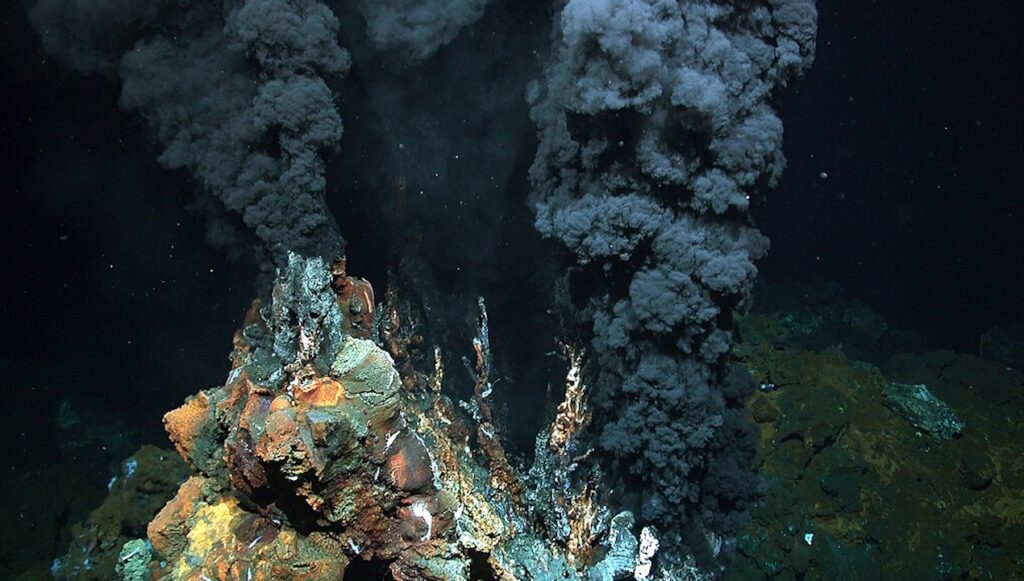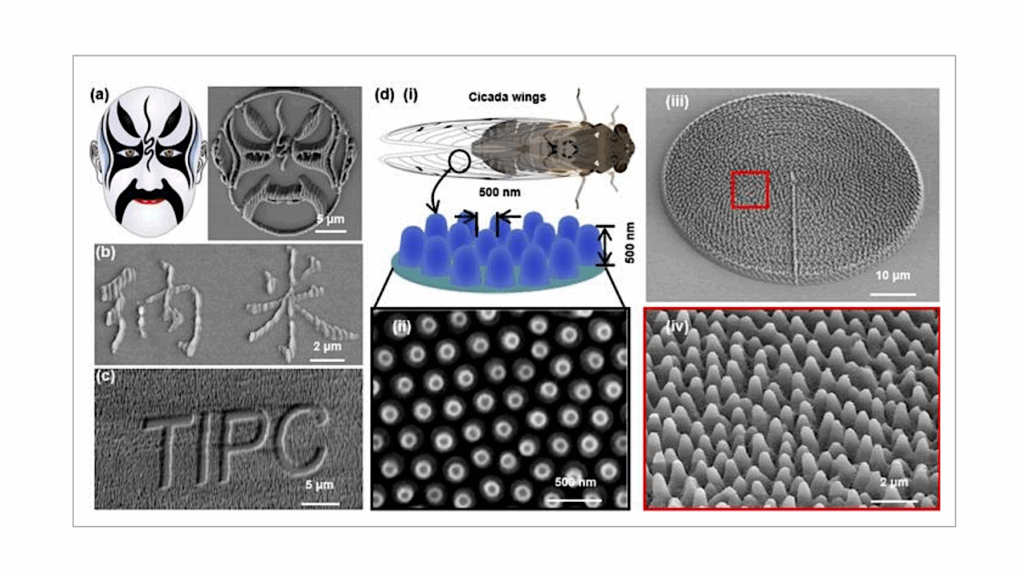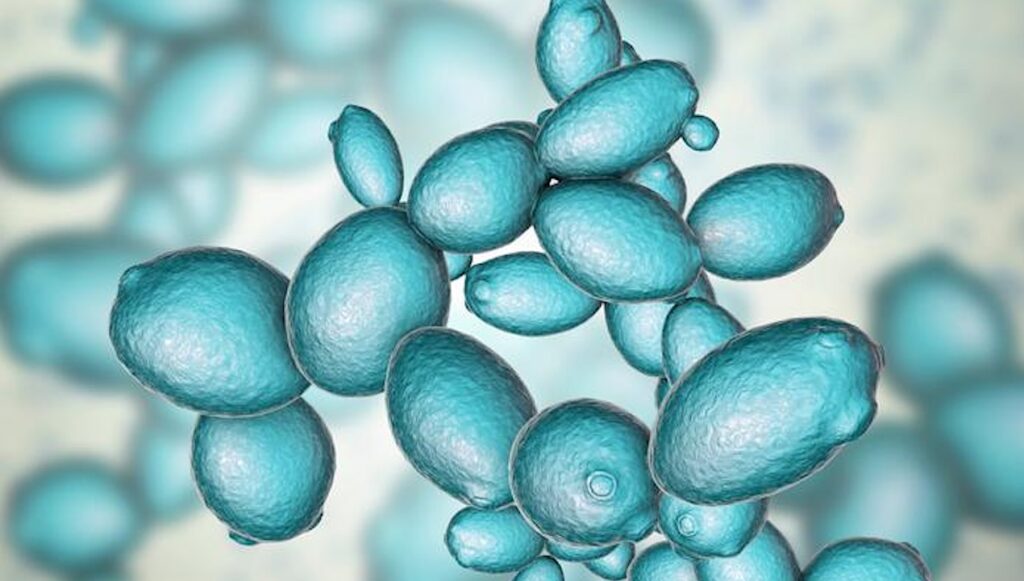Molecular Sensor Enables Water Bear Hardiness By Triggering Dormancy

Tardigrades – hardy, microscopic animals commonly known as “water bears” – use a molecular sensor that detects harmful conditions in their environment, telling them when to go dormant and when to resume normal life. A team led by Derrick R. J. Kolling of Marshall University and Leslie M. Hicks of the University of North Carolina at Chapel Hill report these findings in a new study published January 17 in the open-access journal PLOS ONE.
Water bears are famous for their ability to withstand extreme conditions, and can survive freezing, radiation, and environments without oxygen or water. They persist by going dormant and entering a tun state, in which their bodies become dehydrated, their eight legs retract and their metabolism slows to almost undetectable levels. Previously, little was known about what signals water bears to enter and leave this state.
In the new study, researchers exposed water bears to freezing temperatures or high levels of hydrogen peroxide, salt or sugar to trigger dormancy. In response to these harmful conditions, the animals’ cells produced damaging oxygen free radicals. The researchers found that water bears use a molecular sensor—based on the amino acid cysteine—which signals the animals to enter the tun state when it is oxidized by oxygen free radicals. Once conditions improve and the free radicals disappear, the sensor is no longer oxidized, and the water bears emerge from dormancy. When the researchers applied chemicals that block cysteine, the water bears could not detect the free radicals and failed to go dormant.
Altogether, the new results indicate that cysteine is a key sensor for turning dormancy on and off in response to multiple stressors, including freezing temperatures, toxins and concentrated levels of salt or other compounds in the environment. The findings suggest that cysteine oxidation is a vital regulatory mechanism that contributes to water bears’ remarkable hardiness and helps them survive in ever-changing environments.
The authors add: “Our work reveals that tardigrade survival to stress conditions is dependent on reversible cysteine oxidation, through which reactive oxygen species serve as a sensor to enable tardigrades to respond to external changes.”
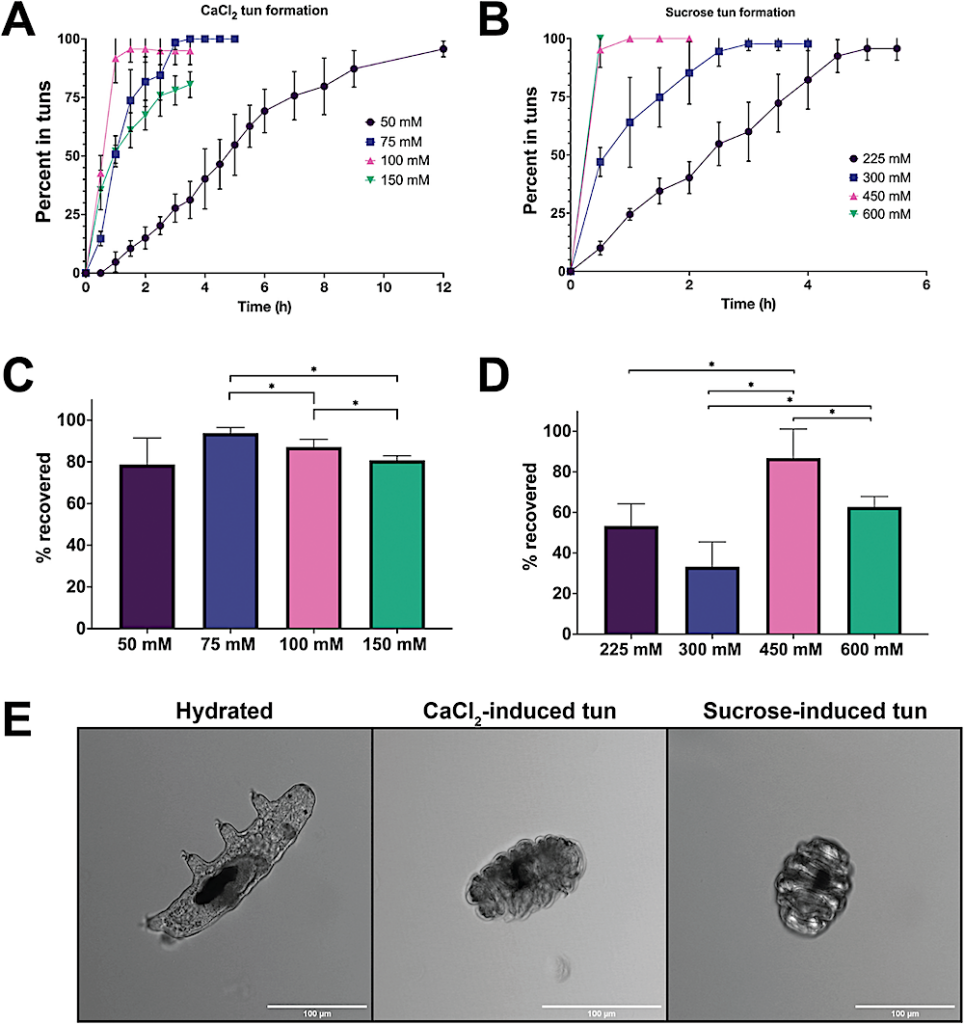
Tardigrades can be induced via osmobiosis using both CaCl2 and sucrose. A) The percent of tardigrades entering tuns following different concentrations of CaCl2. Tardigrades were measured in three biological replicates, where a single replicate included 25–30 tardigrades. B) The percent of tardigrades entering tuns following different concentrations of sucrose. Tardigrades were measured in three biological replicates, where a single replicate included 25–30 tardigrades. C) The percentage of tardigrades that reemerged from CaCl2–induced tuns following reintroduction to aqueous media. D) The percentage of tardigrades that reemerged from sucrose–induced tuns following reintroduction to aqueous media. A-D) Error bars represent standard deviation. C-D) Statistical significance was determined by paired t-tests with Welch’s correction, where * indicates p < 0.05. E) Tardigrades imaged using a confocal microscope in their hydrated, CaCl2-induced, and sucrose-induced states. – PLOS
Chemobiosis reveals tardigrade tun formation is dependent on reversible cysteine oxidation, PLOSOne (open access)
Astrobiology


